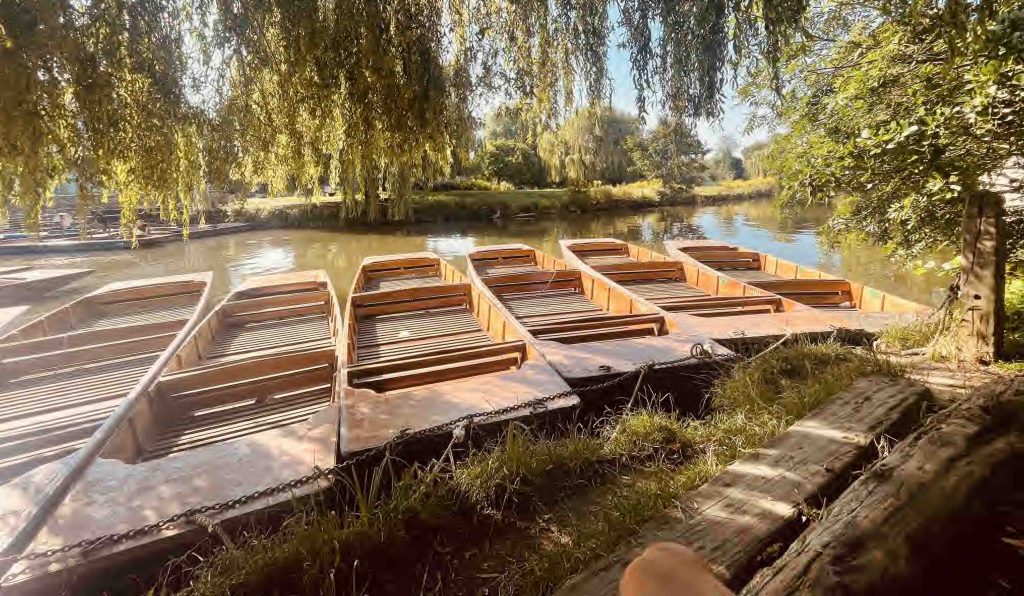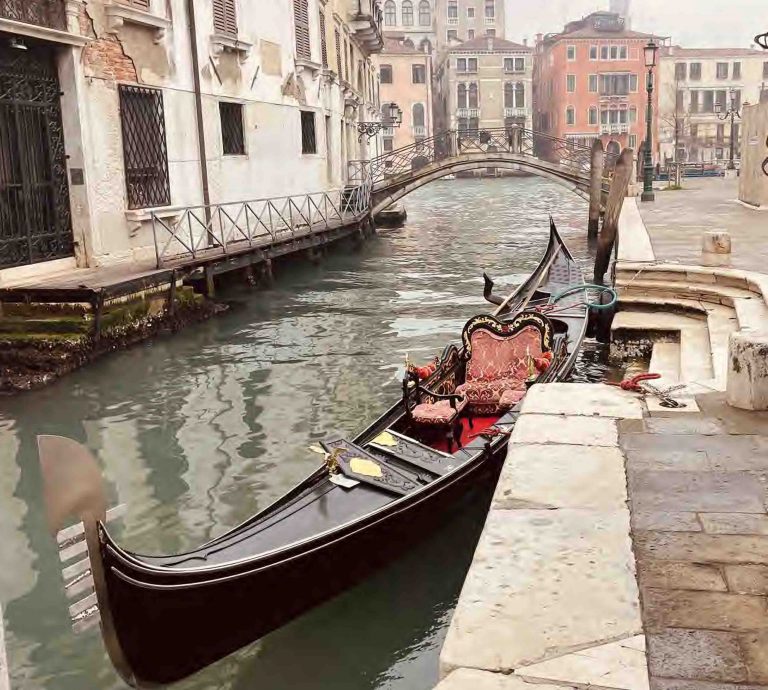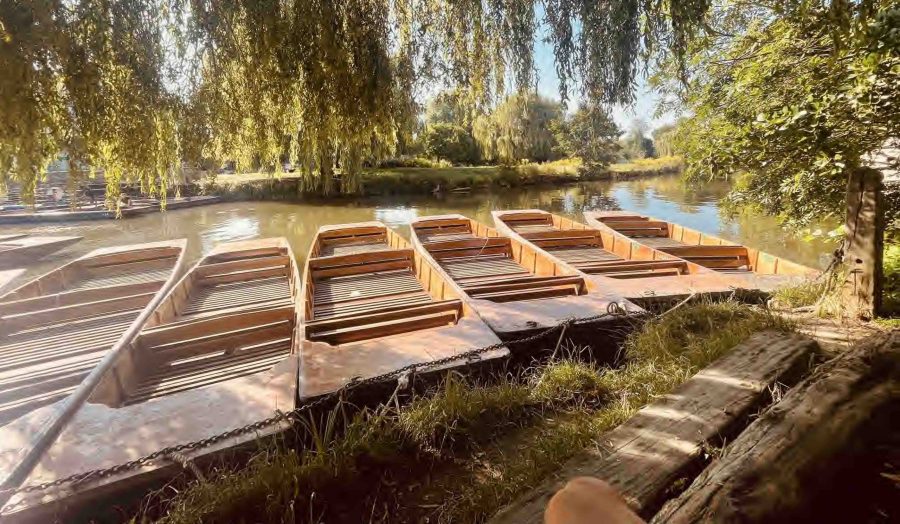Commonly confused with Venetian gondolas, the boats used for Cambridge’s most famous tourist attraction are actually called ‘punts.’ Punts have been in use in the region for hundreds of years and have grown in popularity in Cambridge as a leisure activity since the early 1900s.
At first glance, punts and gondolas appear similar—both are narrow wooden boats designed for shallow waters, where the driver stands behind the passengers. However, a closer inspection reveals significant differences between punts and gondolas.

Punts are flat-bottomed boats specifically designed to navigate through shallow waters. Unlike the curved hull of a regular boat, the flat bottom prevents punts from getting stuck on the riverbed. The word ‘punt’ originates from the Latin word ponos, meaning ‘flat-bottomed boat.’
Flat-bottomed boats have been used worldwide for thousands of years in marshy waters. In England, particularly in the marshy Fens of East Anglia, punts have been in use since the Middle Ages for transport, fishing, and hunting.
Visiting Cambridge gives Harry Potter fans a taste of the atmosphere that inspired much of the magical world, and whether you’re strolling through Trinity College, admiring the architecture, or punting down the river cam, it’s easy to imagine yourself walking the halls of Hogwarts.
Unlike oars, which propel boats by pushing against the water, a punt is moved using a long pole. The driver—traditionally known as a ‘chauffeur’ but commonly referred to as a ‘pusher’—uses a pole to push off the riverbed, propelling the boat forward. These poles are typically around 5 meters long, ensuring they reach the riverbed even at the deepest sections of the river. If the pole cannot touch the bottom, the boat may come to a stop and become stranded.
Using a pole instead of an oar allows for greater maneuverability, making it easier to navigate through narrow waterways. This is particularly useful on the River Cam, where hundreds of boats share the small, winding river during peak seasons.
Traditionally, punt poles were made from lightweight wood, but most are now crafted from aluminum, which is lighter and more durable. However, many people still prefer wooden poles, especially in winter, as aluminum ones become extremely cold to the touch.
Gondolas are iconic symbols of Venice, Italy. Used as a primary means of transport and trade along the Venetian Lagoon since the 11th century, gondolas became popular for leisure in the 16th century. In contrast, Cambridge’s use of punts for leisure began much later, around 1910.

Unlike punts, gondolas are propelled using a single oar rather than a pole. The oar, known as a remo, rests on an oarlock called a forcola, which allows for multiple rowing positions. This method enables gondolas to operate in deeper waters without relying on the riverbed for movement.
Additionally, gondolas are designed asymmetrically to improve efficiency when using a single oar. They are also much longer than punts, typically measuring around 11 meters in length.
Gondolas are often more elaborately crafted and decorated than punts. Historically, they were status symbols among Venetian families and the aristocracy. Traditional gondolas featured intricate carvings, golden embellishments, and even small cabins, known as felze, to provide passengers with privacy.
In contrast, punts are built for durability, with a simpler design suited for frequent use and minor collisions along the River Cam.
Today, all gondolas in Venice are painted black to prevent competition between companies, and gondoliers must wear black or red uniforms. In Cambridge, however, different punting companies have distinctive colors and uniforms.
While Cambridge punts and Venetian gondolas are now primarily used for sightseeing, a small number of gondolas in Venice are still used for trade. One famous tradition unique to gondoliers is singing to their passengers—a rare occurrence among Cambridge punters!
| Feature | Cambridge Punt | Venetian Gondola |
|---|---|---|
| Propulsion | Pole (touches riverbed) | Oar (rests on an oarlock) |
| Length | Shorter (~6-8m) | Longer (~11m) |
| Water Depth | Shallow rivers | Deeper canals |
| Purpose | Leisure & sightseeing | Sightseeing, occasional trade |
| Appearance | Simple, wooden | Ornate, decorative |
While Cambridge punts and Venetian gondolas may seem similar at first glance, they serve different purposes and operate in unique ways. The flat-bottomed punt is ideal for navigating the shallow waters of the River Cam, while the elegantly designed gondola is built for the deeper canals of Venice.
Whether you prefer the charm of a Cambridge gondola (punt) or the romance of a Venetian gondola, both offer unforgettable experiences on the water. Next time you visit Cambridge, why not try punting for yourself?
